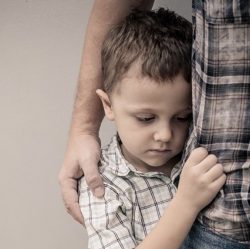
The state data released today by the Annie E. Casey Foundation through the Fostering Youth Transitions report is the most comprehensive data set ever collected that allows each state to compare to other states how young people fare transitioning from foster care into adulthood. Arkansas did better on several indicators than other states, but there are still areas for improvement, such as the number of placements experienced by youth in foster care.
You can download the Arkansas state profile here and read the Annie E. Casey Foundation data brief here.
Arkansas exceeds the national average on a couple of key points:
- Housing can be a critical barrier when leaving foster care. Arkansas has a higher percentage of foster care youth able to find stable housing (78 percent) than the national average (70 percent).
- Employment programs and vocational trainings are important in helping youth find jobs when they leave the foster care system. A higher percentage of youth in Arkansas (35 percent) receive employment programs or vocational training than the national average (23 percent).
But we are falling short in several ways:
- Multiple foster care placements are bad for young people at any age. Yet the data in Fostering Youth Transitions show that, nationally, half of foster youth experience at least three placements. Arkansas’s percentage is even higher: 58 percent of youth in Arkansas’s foster care system experience three or more placements, compared to 51 percent nationally.
- Among older teens in foster care nationwide, more than half age out of foster care without being reunited or connected to a family. Leaving foster care at only 18 years old, without supportive adult connections or access to resources, puts youth at increased risk for homelessness, poverty, unemployment and other challenges. In Arkansas, 60 percent of youth in foster care will age out of the system, compared to 51 percent nationally.
- More than a third of young people in foster care have most recently experienced a group home or institutional placement, which is the least optimal place for youth. In Arkansas, 44 percent of youth in the foster care system have been placed in a group setting, compared to 34 percent nationwide.
“The information and data in this report are important because all young people deserve the relationships, resources and opportunities needed to help ensure their well-being and success as they transition from foster care to adulthood,” said Jennifer Ferguson, deputy director of Arkansas Advocates for Children and Families. “This information allows us to see where we need to improve and will allow us to track our progress. We have to ensure we are doing all we can to place young people, no matter their age, with caring families and to help them build relationships with supportive adults. We want all children to have families and support to help them succeed when they transition out of foster care.”
Nearly two decades ago, Congress resolved (through the Foster Care Independence Act of 1999) to track national and state-level data and outcomes around youth who have experienced foster care. The data allow us to compare how we are doing relative to other states and to see what areas we need to improve in order to help youth. If we want to ensure young Arkansans don’t fall through the cracks after aging out of foster care, we need policies and programs in place that promote permanency, and data such as this help us track our progress.
The Fostering Youth Transitions data brief is available as of Nov. 13 at www.aecf.org. The data brief, which contains recent, groundbreaking national and state-by-state data on indicators of foster child well-being, is made possible through the Casey Foundation’s Jim Casey Youth Opportunities Initiative.
